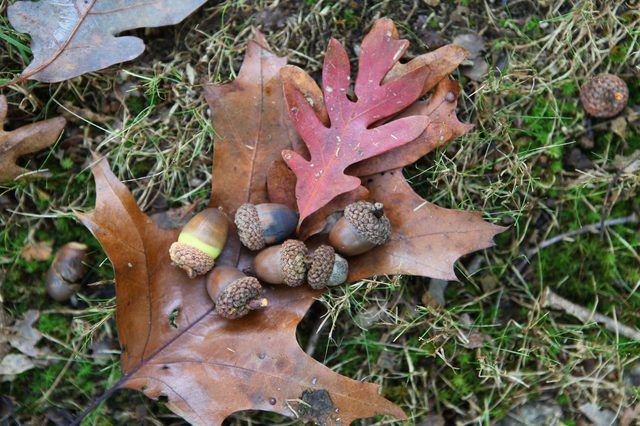Bulbs
Flower Basics
Flower Beds & Specialty Gardens
Flower Garden
Garden Furniture
Garden Gnomes
Garden Seeds
Garden Sheds
Garden Statues
Garden Tools & Supplies
Gardening Basics
Green & Organic
Groundcovers & Vines
Growing Annuals
Growing Basil
Growing Beans
Growing Berries
Growing Blueberries
Growing Cactus
Growing Corn
Growing Cotton
Growing Edibles
Growing Flowers
Growing Garlic
Growing Grapes
Growing Grass
Growing Herbs
Growing Jasmine
Growing Mint
Growing Mushrooms
Orchids
Growing Peanuts
Growing Perennials
Growing Plants
Growing Rosemary
Growing Roses
Growing Strawberries
Growing Sunflowers
Growing Thyme
Growing Tomatoes
Growing Tulips
Growing Vegetables
Herb Basics
Herb Garden
Indoor Growing
Landscaping Basics
Landscaping Patios
Landscaping Plants
Landscaping Shrubs
Landscaping Trees
Landscaping Walks & Pathways
Lawn Basics
Lawn Maintenance
Lawn Mowers
Lawn Ornaments
Lawn Planting
Lawn Tools
Outdoor Growing
Overall Landscape Planning
Pests, Weeds & Problems
Plant Basics
Rock Garden
Rose Garden
Shrubs
Soil
Specialty Gardens
Trees
Vegetable Garden
Yard Maintenance
How to Plant Acorns in a Pot
How to Plant Acorns in a Pot. All species of oak (Quercus spp.) grow from acorns, although their specific germination requirements vary according to their type. Most cultivated oak species fall into one of two categories: the red or black oak category or the white oak category. Acorns of the former type mature slowly and require chilling, while the...
All species of oak (Quercus spp.) grow from acorns, although their specific germination requirements vary according to their type. Most cultivated oak species fall into one of two categories: the red or black oak category or the white oak category. Acorns of the former type mature slowly and require chilling, while the latter germinate readily without pretreatment. No matter which type of acorn, they perform best if started in pots to keep them safe from foraging animals. However, the pots must be deep enough to accommodate their long taproots with adequate drainage.
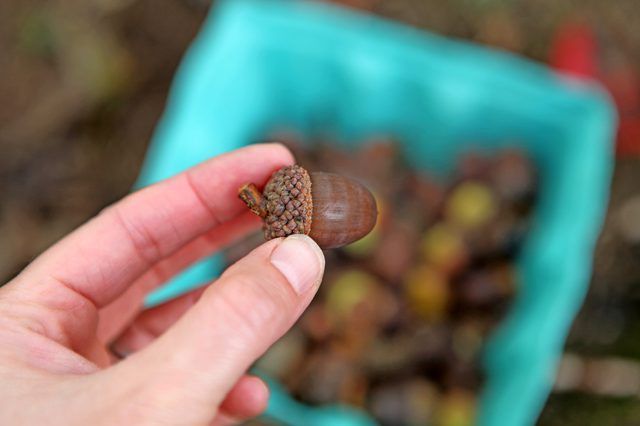
Things You'll Need
Bucket
Newspaper
Sealable plastic bags
Perlite or sphagnum moss
2-gallon nursery pots
Potting soil
Milled peat
Coarse sand or perlite
Mulch
Step 1
Gather acorns in autumn immediately after they drop to the ground. Choose acorns with a dried cap and a glossy brown casing with no hint of green. Avoid acorns with obvious defects or damage, such as insect holes, cracks, shriveled spots or discolorations.
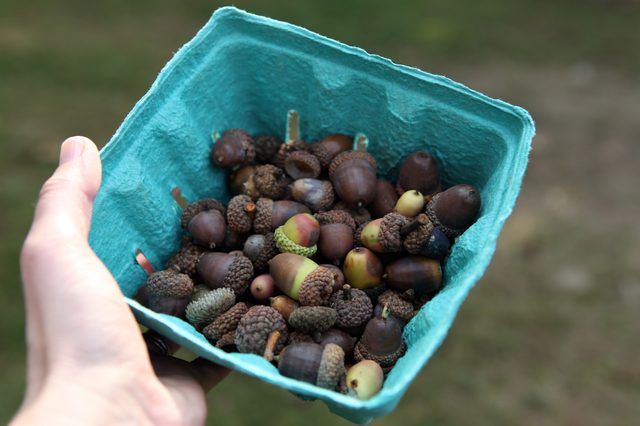
Step 2
Collect the acorns in a bucket. Fill the bucket with cool, clean water and set it in a sheltered location. Soak the acorns overnight to determine which are viable. Scoop out and discard any acorns that are floating on the surface the following morning; they are likely inviable.
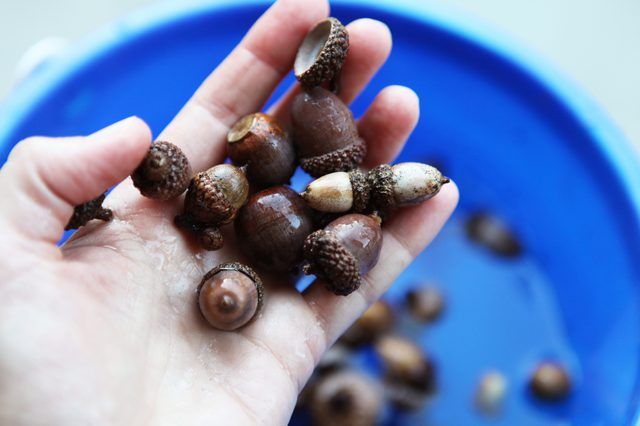
Step 3
Remove the acorns that sank to the bottom of the bucket. Spread them out on a sheet of newspaper for roughly 20 minutes to let any excess moisture evaporate. Turn them occasionally so all sides can dry.
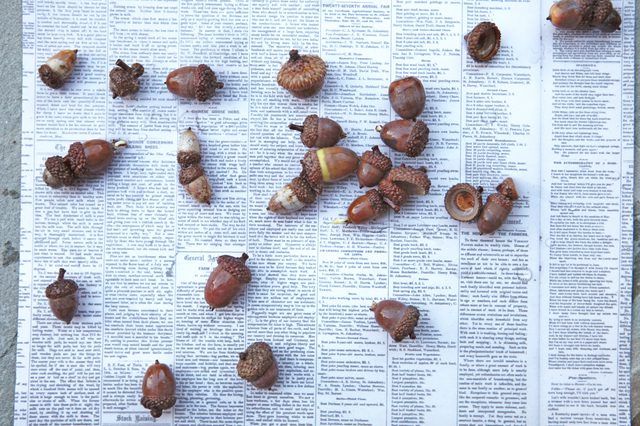
Step 4
Cold stratify red oak-type acorns for at least 30 days to break their dormancy before sowing. Place them inside a sealable plastic bag filled with moistened perlite or sphagnum moss and place the bag inside the refrigerator. Remoisten the perlite whenever it feels nearly dry.
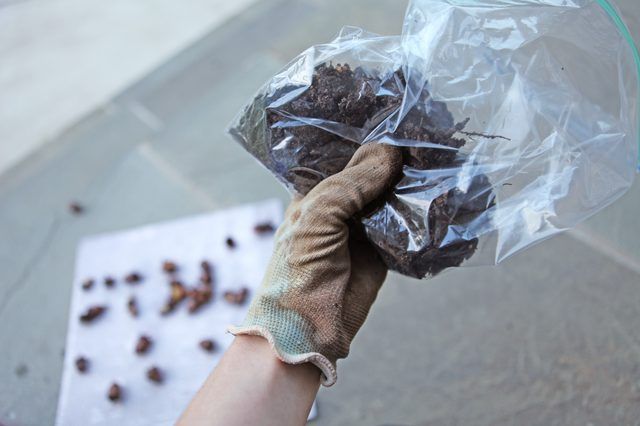
Step 5
Fill 2-gallon nursery pots with a fast-draining growing medium such as a mix of equal parts potting soil, milled peat and coarse sand or perlite. Sow two acorns in each pot at a depth equal to their diameter; for instance, a 1/2-inch-wide acorn should be sown at a depth of 1/2 inch. Lay the acorn on its side in the hole and then completely cover it with medium.
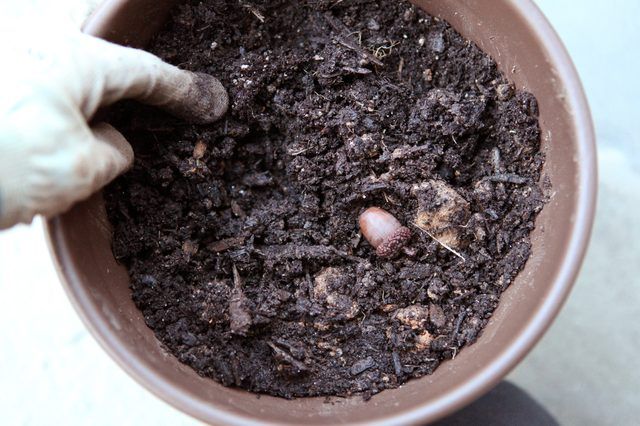
Step 6
Place the pot outdoors in a sheltered, lightly shaded location. Water to a 3-inch depth during the autumn and winter months if no rain falls for longer than one week. Let the medium dry out completely in the top 1 inch before watering again to prevent excess moisture from building up around the acorns.
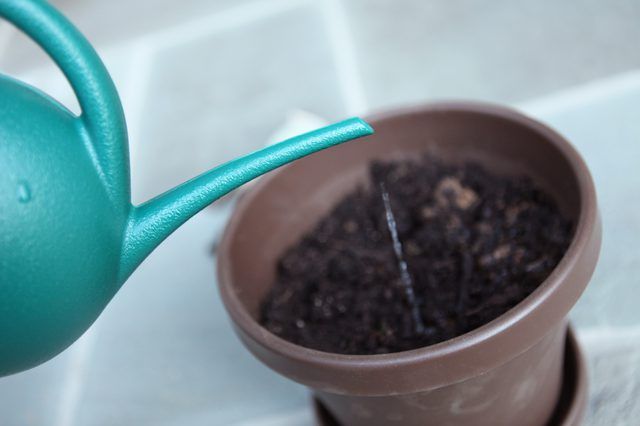
Step 7
Move the nursery pots into full sun in spring after the last frost. Continue to water the acorns whenever the soil dries out in the top inch. Watch for germination in one to three months after daytime temperatures stay reliably above 75 degrees Fahrenheit. Remove the smaller of the two oak seedlings from each pot, if both acorns successfully sprout.
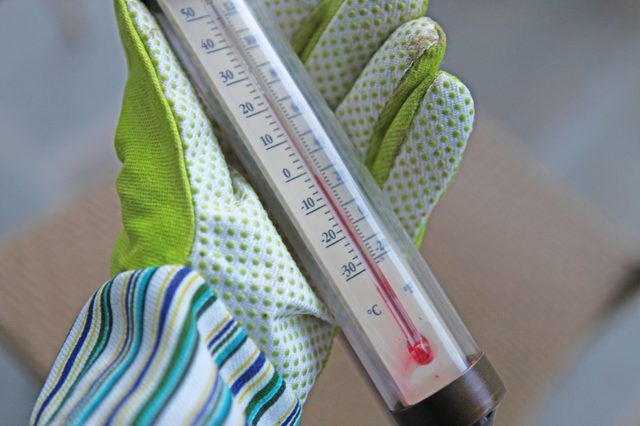
Step 8
Grow the oak seedlings under sheltered nursery conditions for one to two months or until they produce several sets of mature foliage. Transplant them into a planting site with growing conditions suited to their species. Provide weekly irrigation during their first summer in the ground, as well as a 2-inch-thick mulch layer to conserve water and protect their roots.
